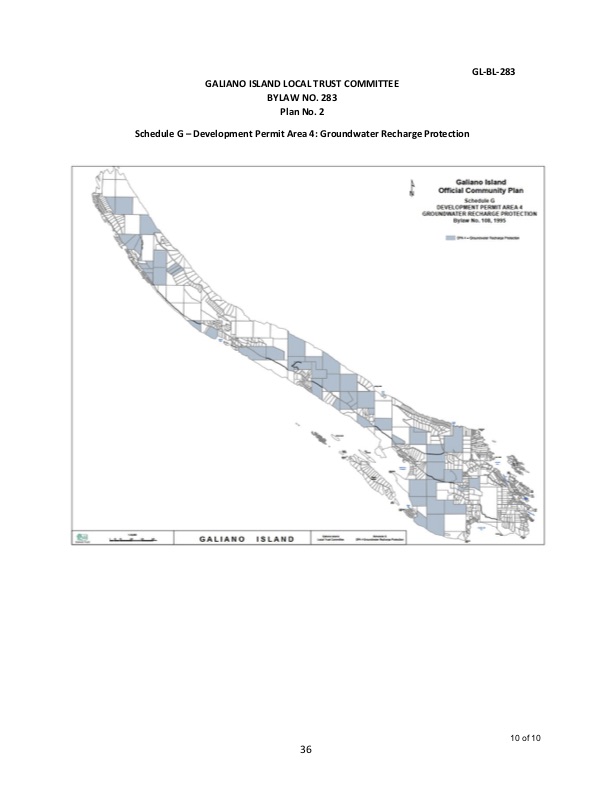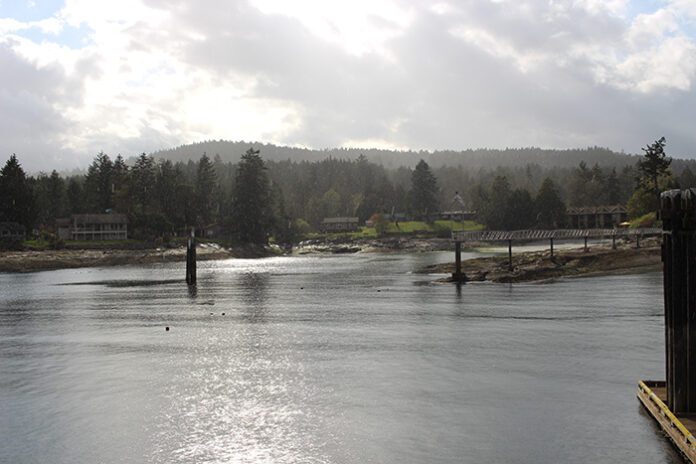The Islands Trust’s Executive Committee (EC) is supporting one island’s small –– if arguably historic –– steps toward reconciliation within its own regulations, unanimously approving new language for Galiano Island’s Official Community Plan (OCP) that specifically addresses Indigenous-owned land.
On its face, Galiano’s proposed Bylaw 283 is simply the latest amendment to the island’s OCP, updating groundwater policies and objectives –– including guidelines for developing land within “aquifer recharge” areas identified by the bylaw. Galiano’s LTC gave first reading of the bylaw back in March, ultimately approving it in November and sending it along to EC for its consideration Monday, Dec. 9.
The bylaw carves out a number of exceptions where the requirement for a development permit within some areas may not apply, including some “grandfathering” language for existing structures and their maintenance, farm operations, some limited tree removal and invasive species control. But uniquely, it also includes a qualified exemption for “land owned by a person with federal Indigenous status living in their traditional territory with proof of Indigenous family lineage.”
That last line has prompted significant comment from local islanders since it was introduced, ranging from concerns over the LTC overstepping its authority to notions of fairness and bald accusations of favouritism and self-interest. Some correspondence from residents worried a well-intentioned exception would encourage “selfish” development from individuals that might not serve Indigenous people in the collective –– the long tail of the Indian Act, one wrote, “hard at work to create division and oppress Indigenous people further.”
“I just want to recognize that there have been over 40 letters, every one of [which] has been against this, or suggested that the Executive Committee should not approve this bylaw,” said EC vice-chair Tobi Elliott. “I would just ask everyone for patience as we all adjust to new considerations –– that maybe should have been considerations 200 years ago.”

Another wrinkle noted by both letter-writers and staff: an exempt person could potentially sell their property after development.
“In terms of where we are, as part of a colonial governing system, I want to remind us that this may be seen as pushing the envelope,” said EC vice-chair Tim Peterson, adding that there could be some “synergy” between passing the bylaw and the Trust’s recent request to the province for governance review –– necessarily including aligning decision-making with the Declaration of the Rights of Indigenous Peoples Act.
“Is this the best way for Galiano LTC to advance reconciliation? Maybe, maybe not,” said Peterson. “But it is [a] piece of legislation that’s in front of the LTC that provides an opportunity to signal the intent.”
Both Galiano’s LTC and the broader Islands Trust have strong policy statements favouring reconciliation, which a legal opinion suggested might be part of a defence should a court challenge be sparked. According to the opinion requested by trustees, such action is a possibility, as granting exemptions based on the identity of a landowner might be outside the powers intended for local governments.
Noting that staff had nonetheless recommended supporting the bylaw as written, EC vice-chair David Maude said the relatively “nice, tidy and small” language might provide just the right opportunity for trustees to find their first footing for further Indigenous collaborations.
“I think that if we’re going to test the waters, this is the appropriate time,” said Maude, thanking staff and the LTC for the work put into developing the bylaw. “I cannot, in my mind, find a solid reason to vote against it.”
In joining fellow vice-chairs in support, Elliott said she had been moved after viewing the Islands Trust’s archived recording of a recent meeting where Penelakut Chief Pam Jack had addressed trustees, voicing support for the proposal.
“So thankful to technology for that,” she said. “It’s quite a bit different to hear the words from Penelakut Chief Pam Jack that were spoken, than it is to read –– and then weigh all these different considerations.”
Elliott said the word of a chief speaking on behalf of her community “carries a lot of weight,” and that her own support came after significant consideration of pros and cons, including concerns over precedent and whether it would raise expectations past the abilities of –– or authorities delegated to –– the Islands Trust.
“It was mentioned many times that Penelakut Tribe had not been consulted in the development of bylaws before, and this is the first time that they saw themselves in a document –– in an instrument that we are giving power to,” said Elliott. “So is this fair? I would say maybe no. But is the system fair? I would also say it isn’t.”
There were some operational concerns, such as how property owners would “prove” their Indigenous family lineage. When asked for clarification, staff told EC that while there could be legal consultation involved, such proof would generally be provided by the property owner, reviewed by staff and an exemption letter issued stating the information was sufficient to satisfy the exemption. That answer made it clear, trustees agreed, that they were likely leaving such interpretations to a future body of planners –– and possibly future trustees.
But, they also agreed, finding ways for Indigenous governing bodies to be in a position of inclusion in bylaws was important, if “tricky,” for local government everywhere.
“Even if it’s not [in] an appropriate place,” said Elliott, “that recognition alone, I believe, is going to support the Islands Trust as a whole in establishing and maintaining mutually respectful relationships between Indigenous and non-Indigenous peoples.”
“To me, it’s about doing the right thing,” said chair Peter Luckham. “I don’t want to stand in the way of that, and I am prepared to see how that unfolds.”
Peterson told attendees at Galiano’s LTC the following day the next step would be sending the bylaw to the province for ministry approval.
“And we’ll see how that all rolls out,” said Peterson.

